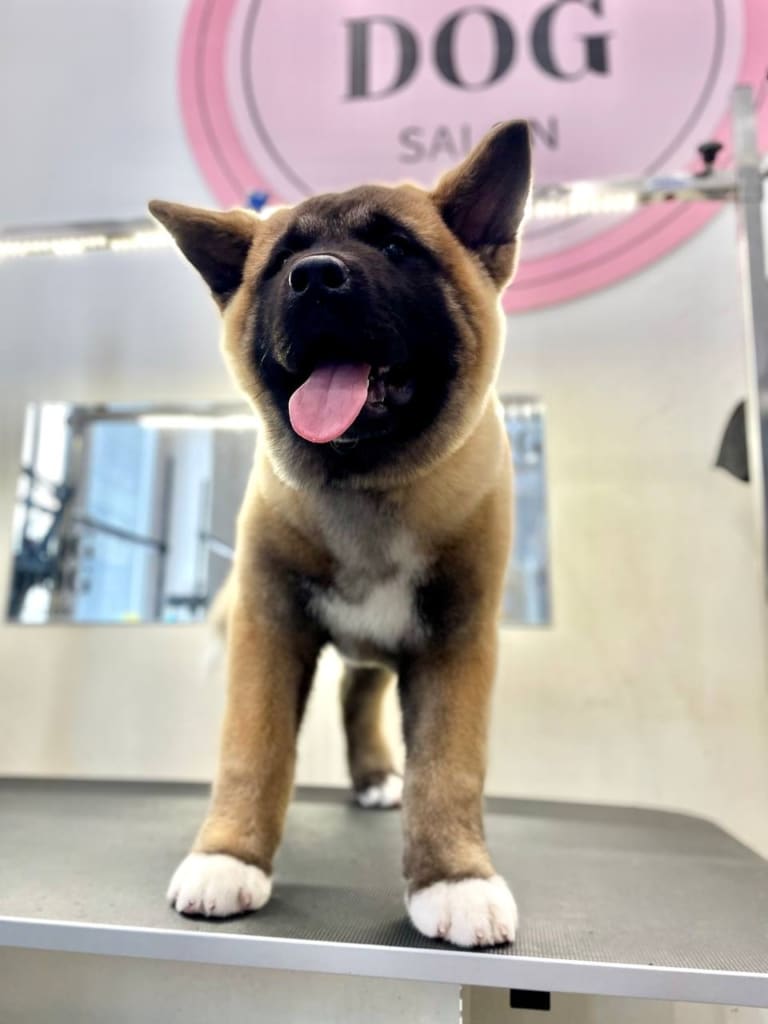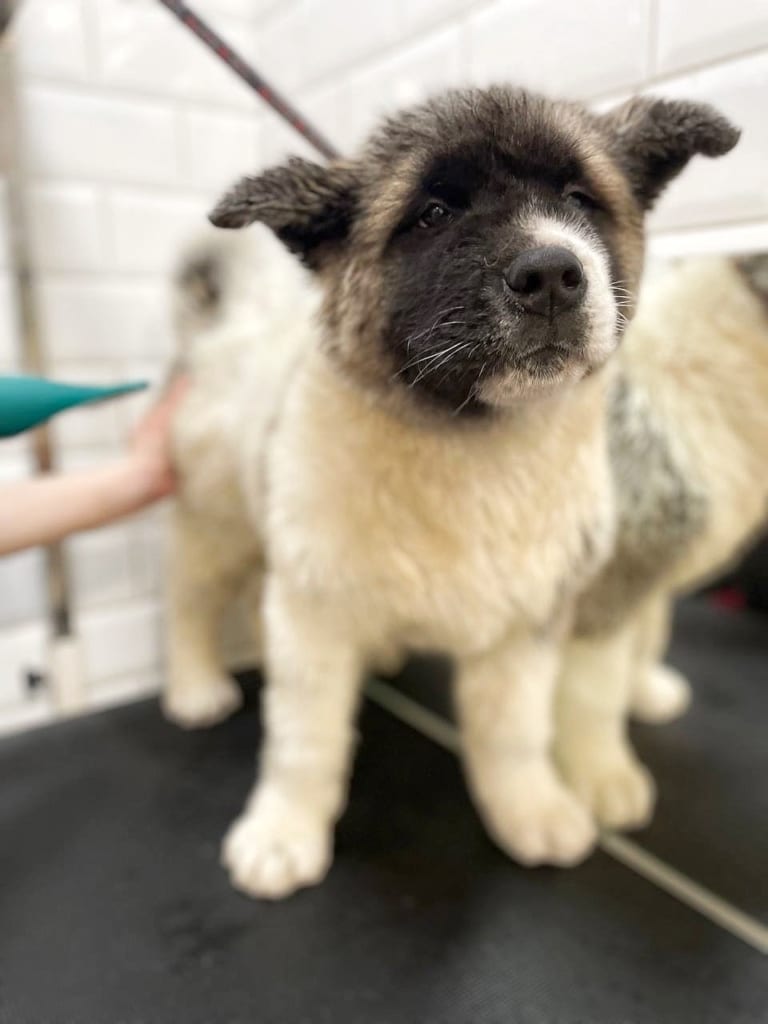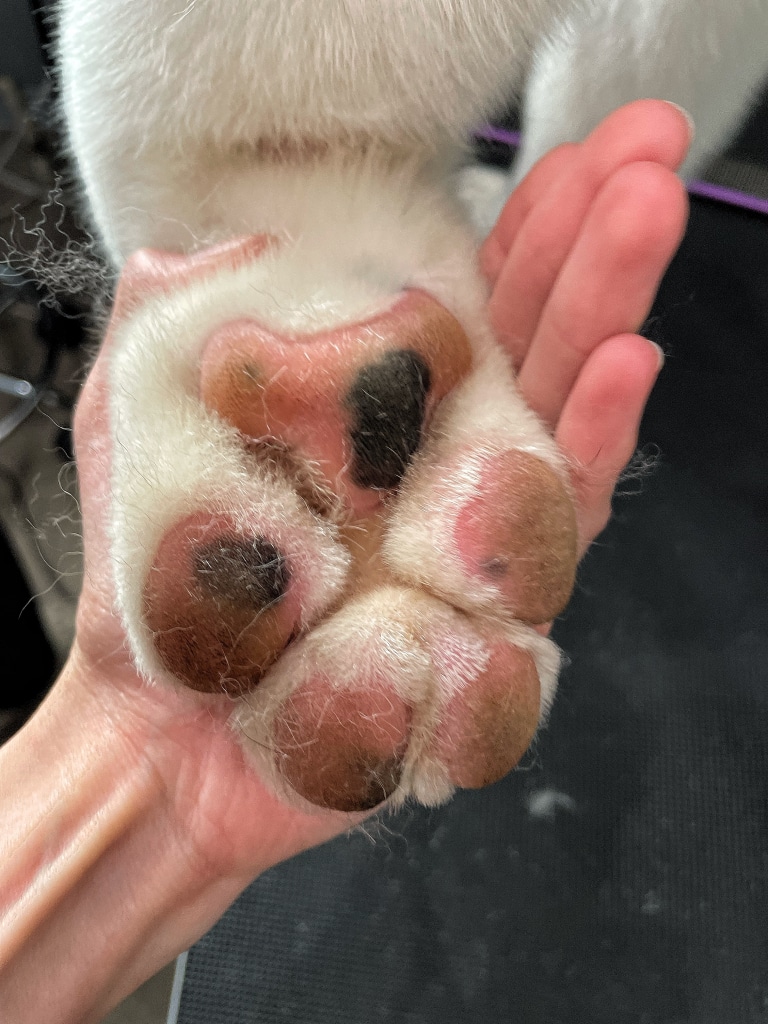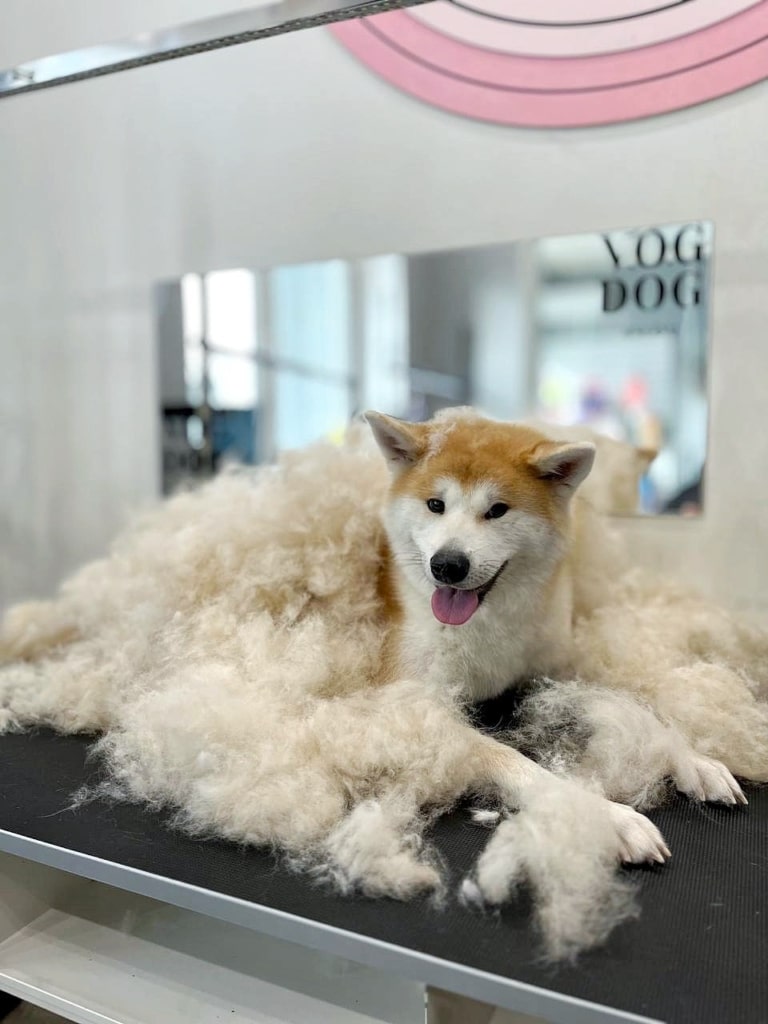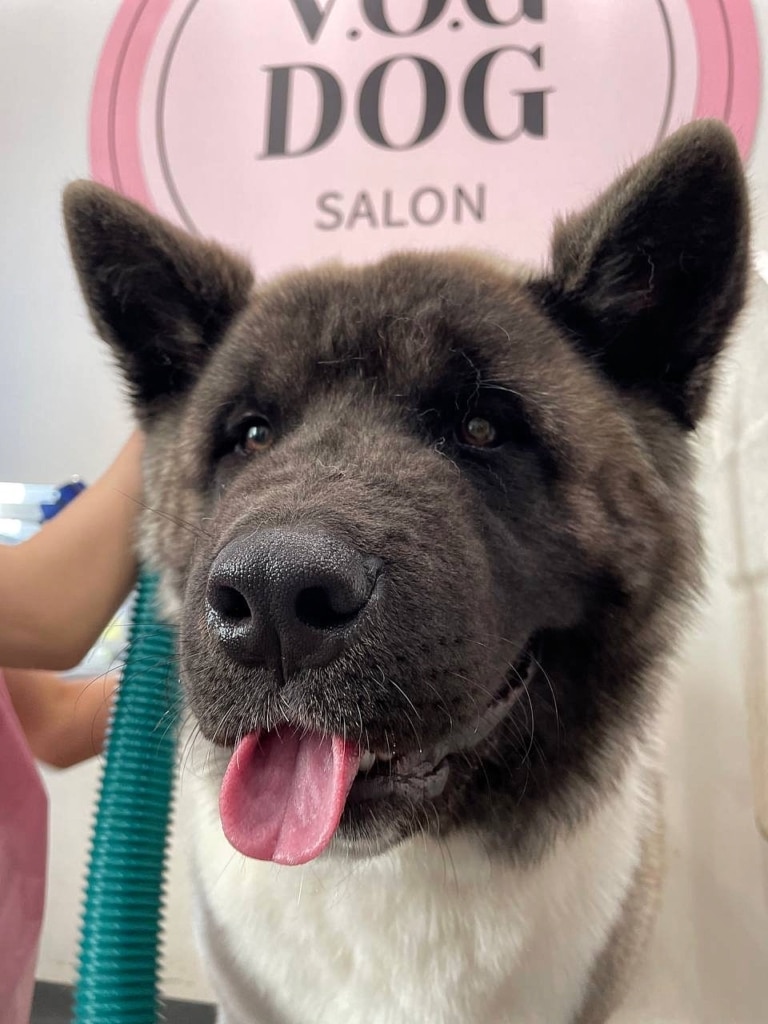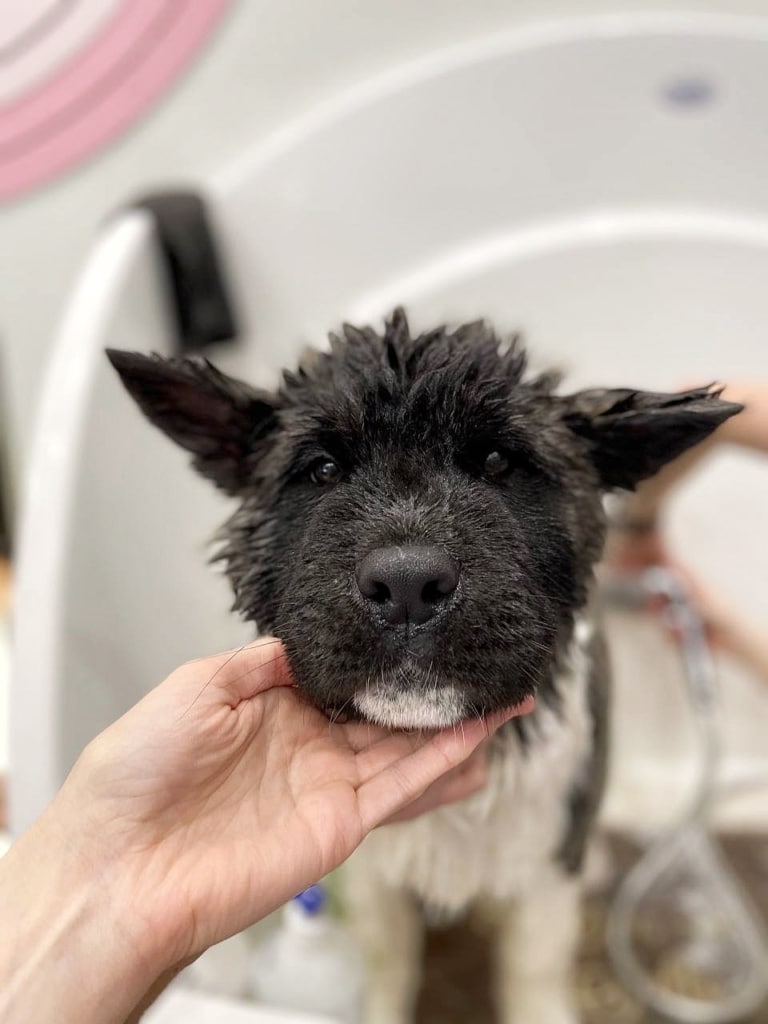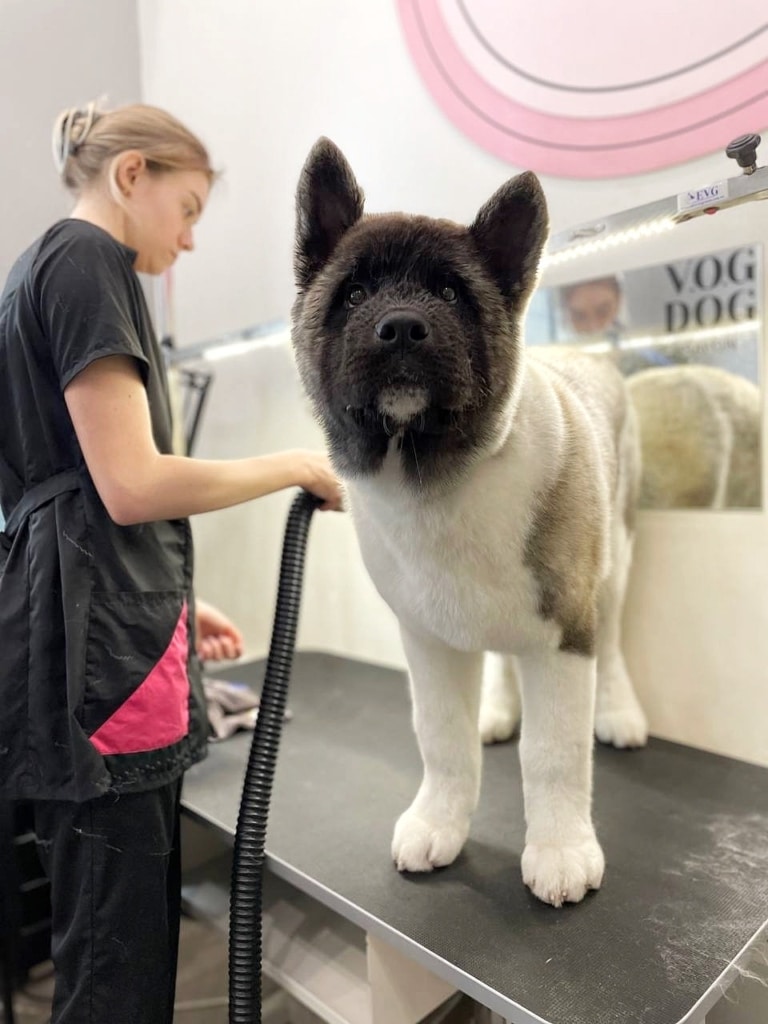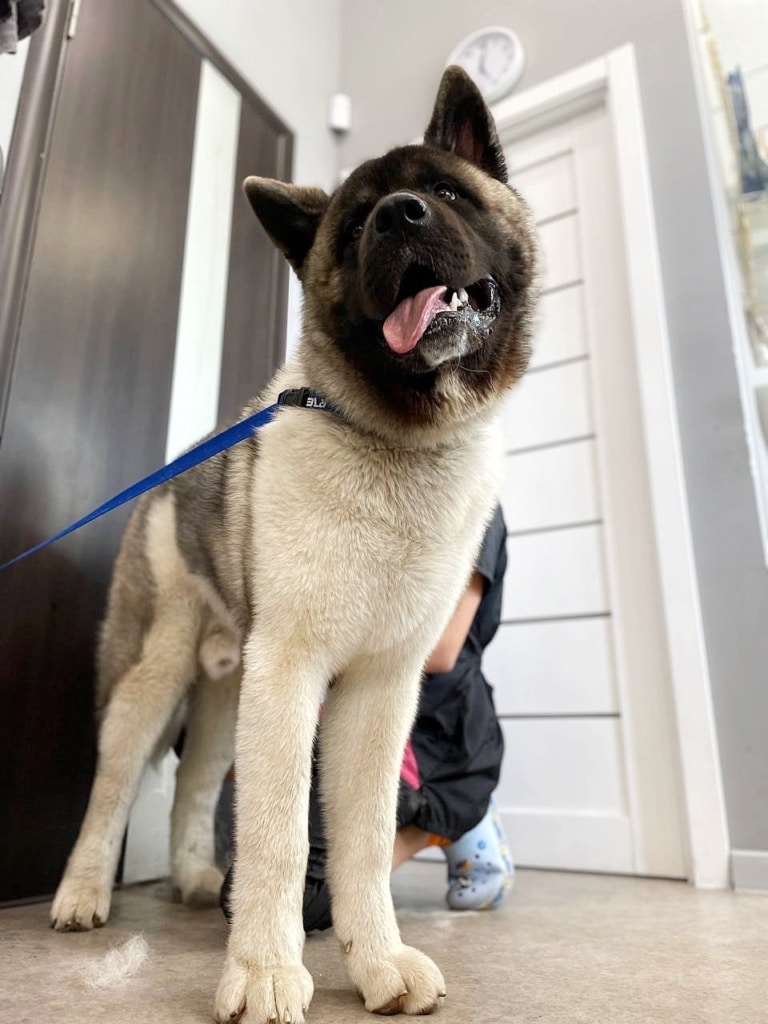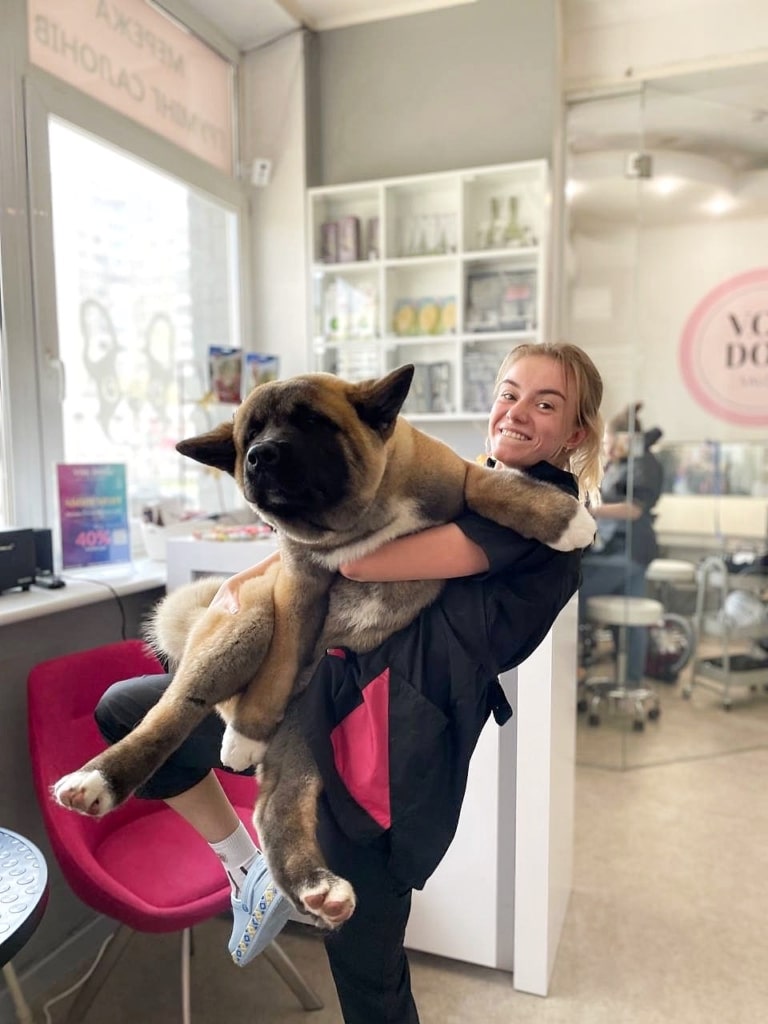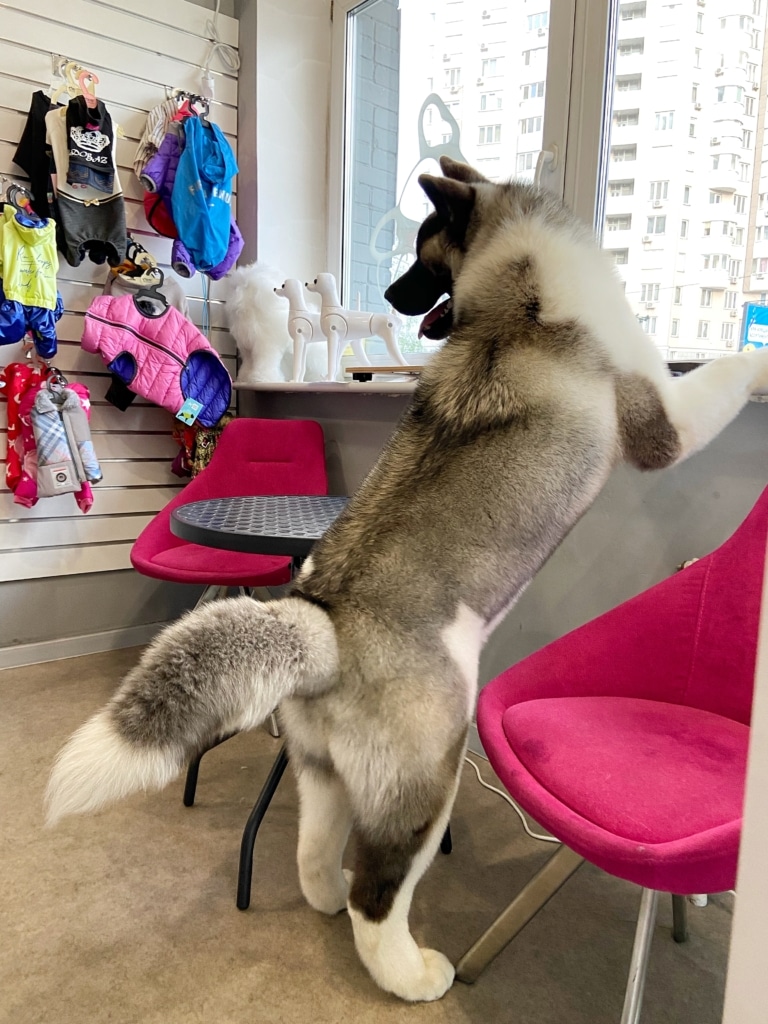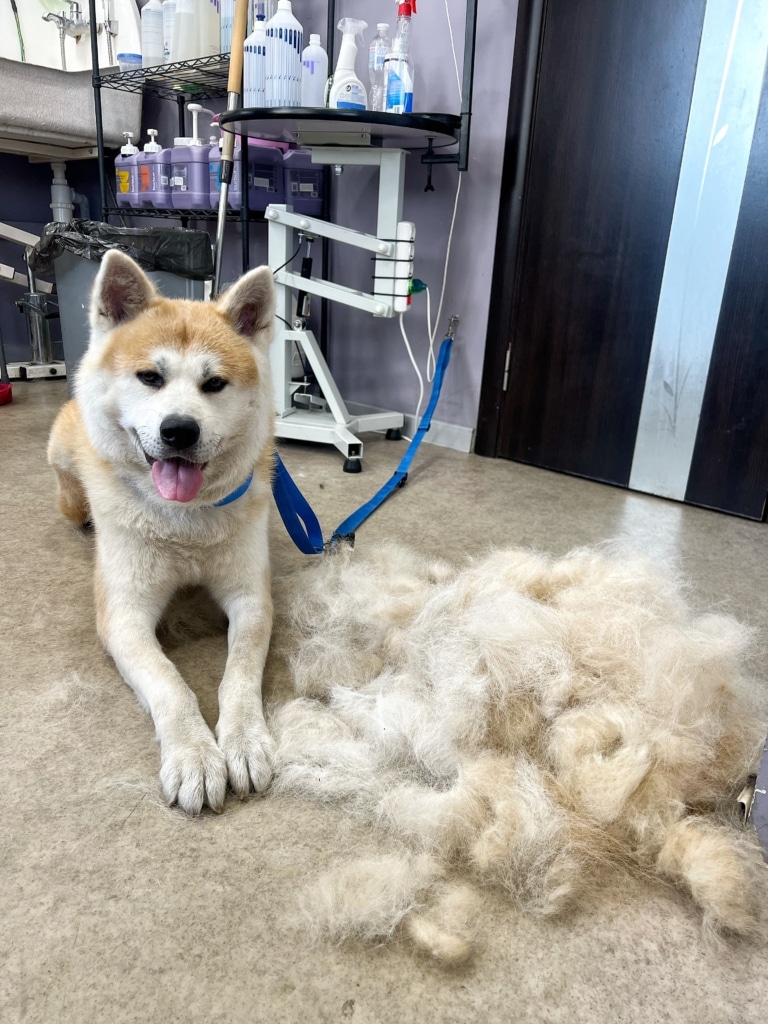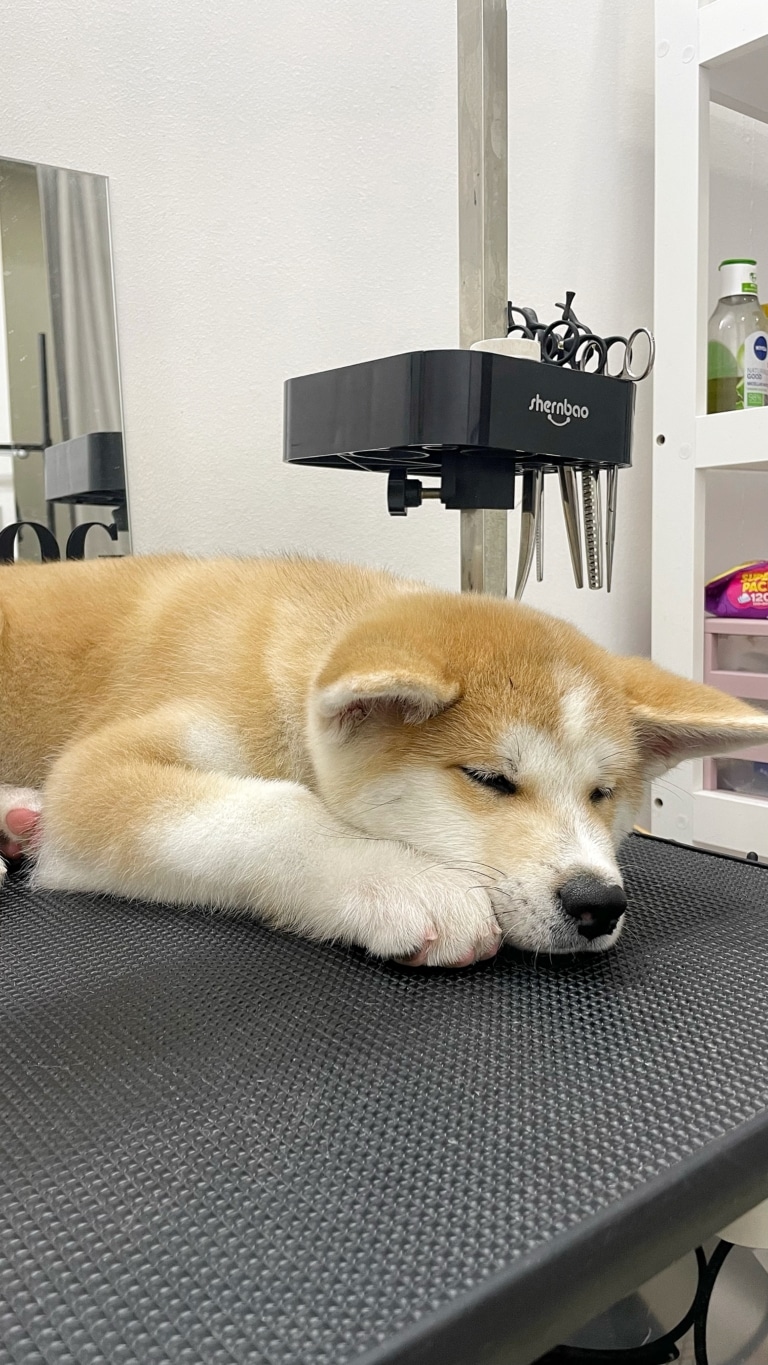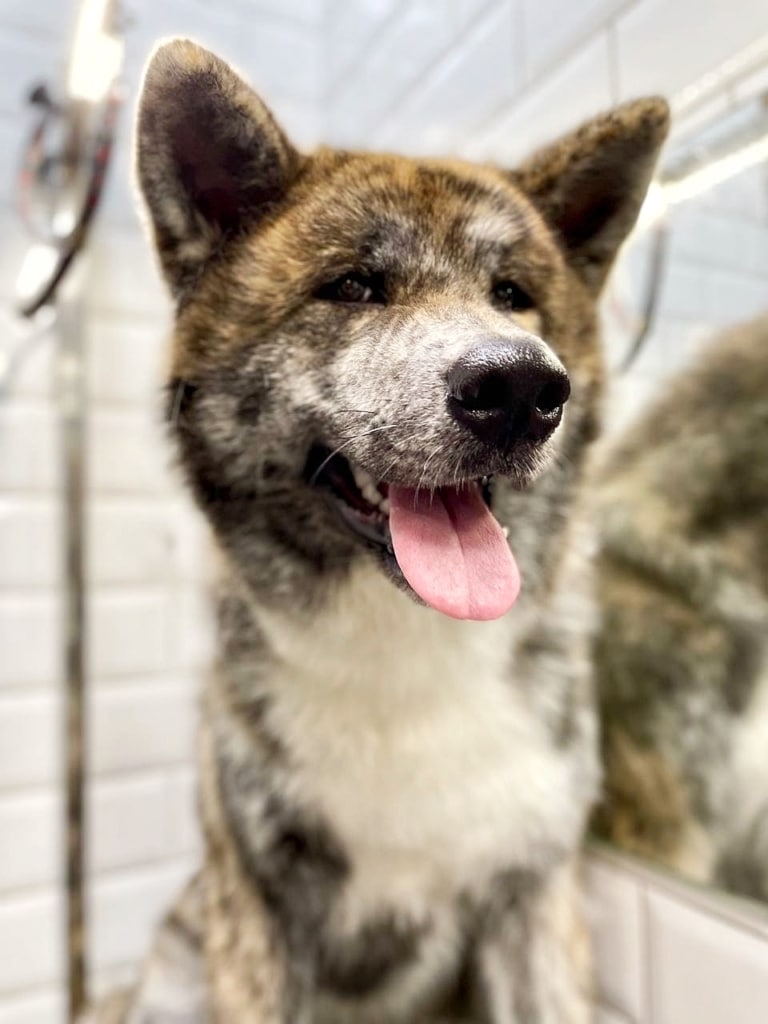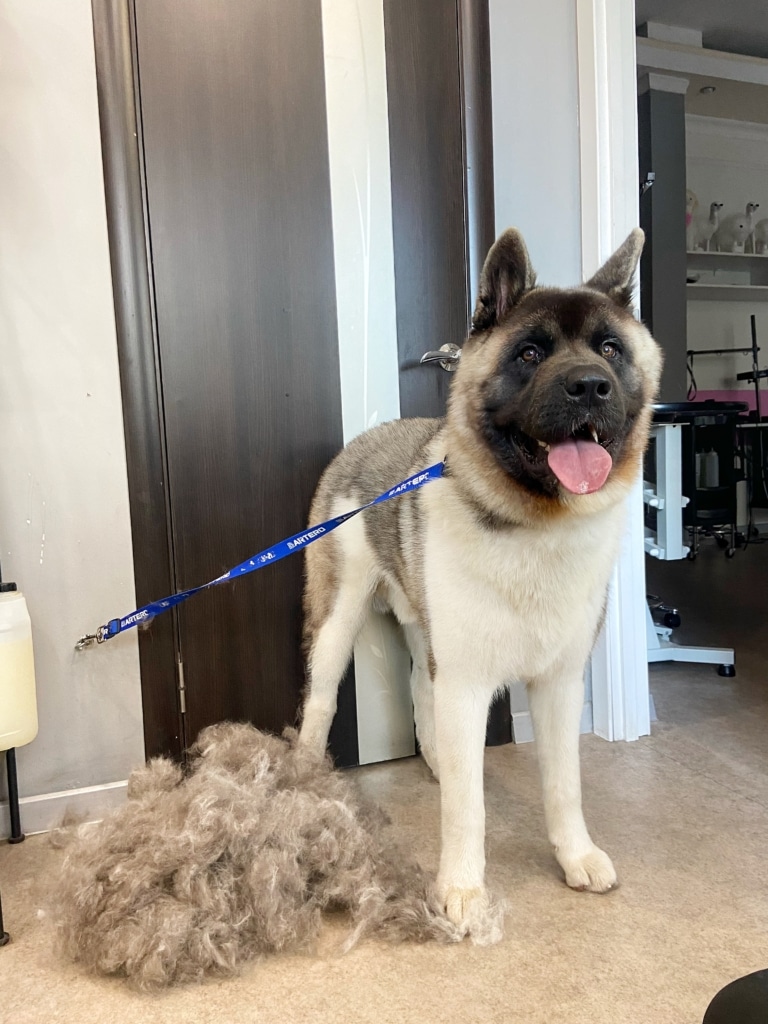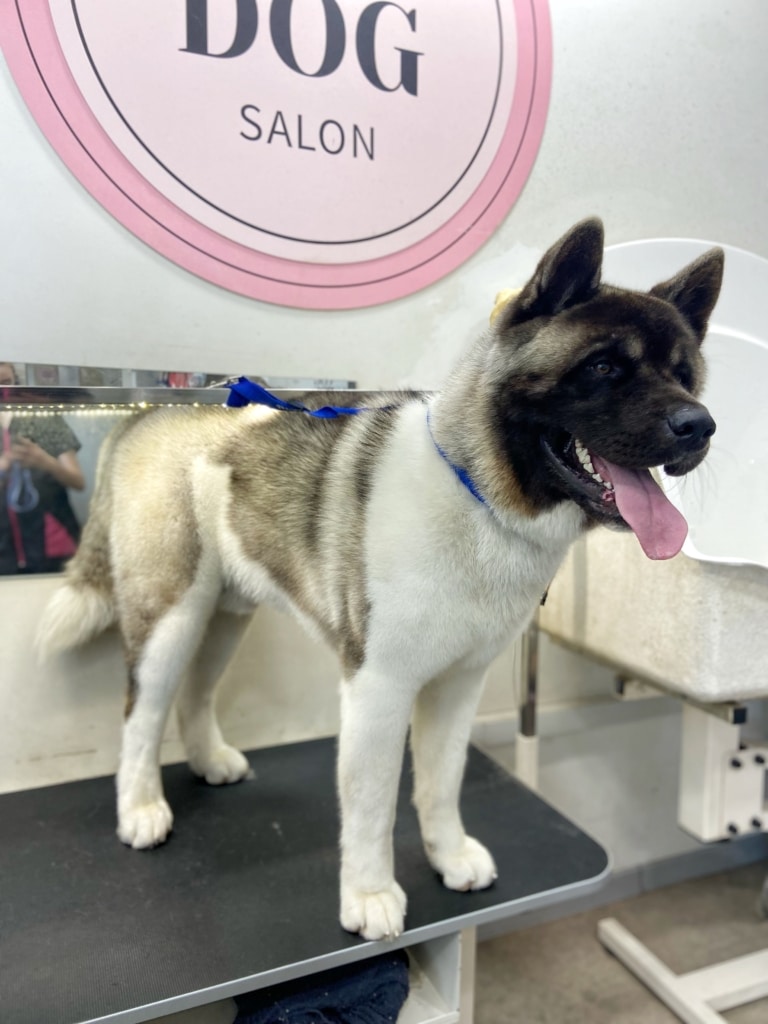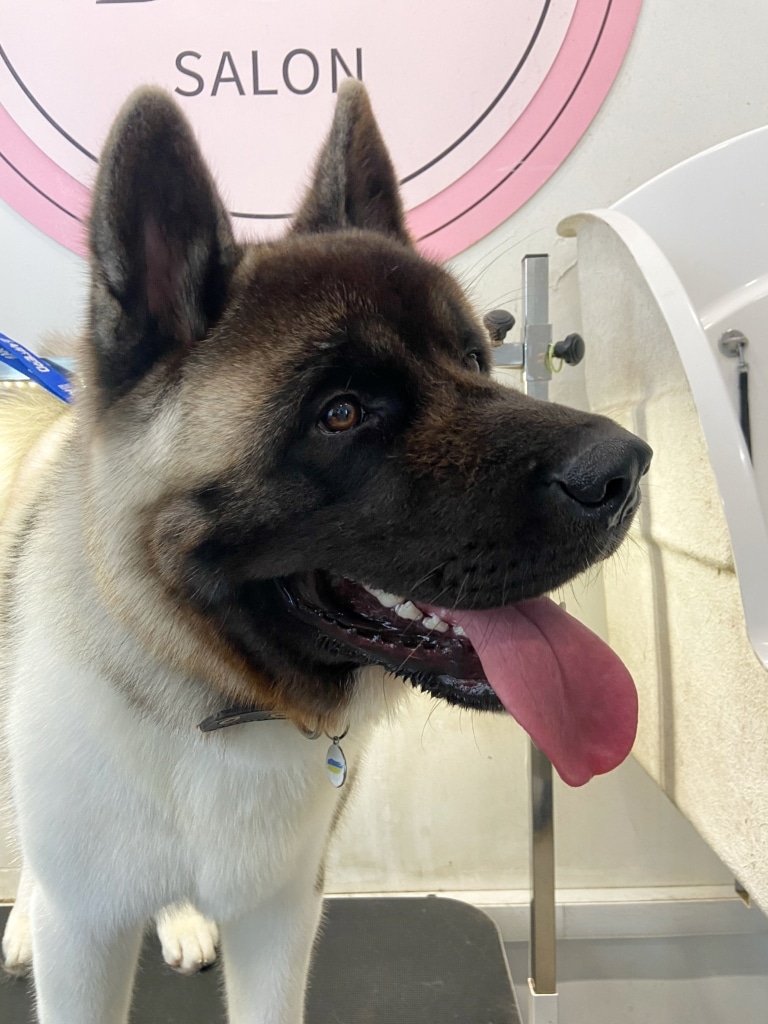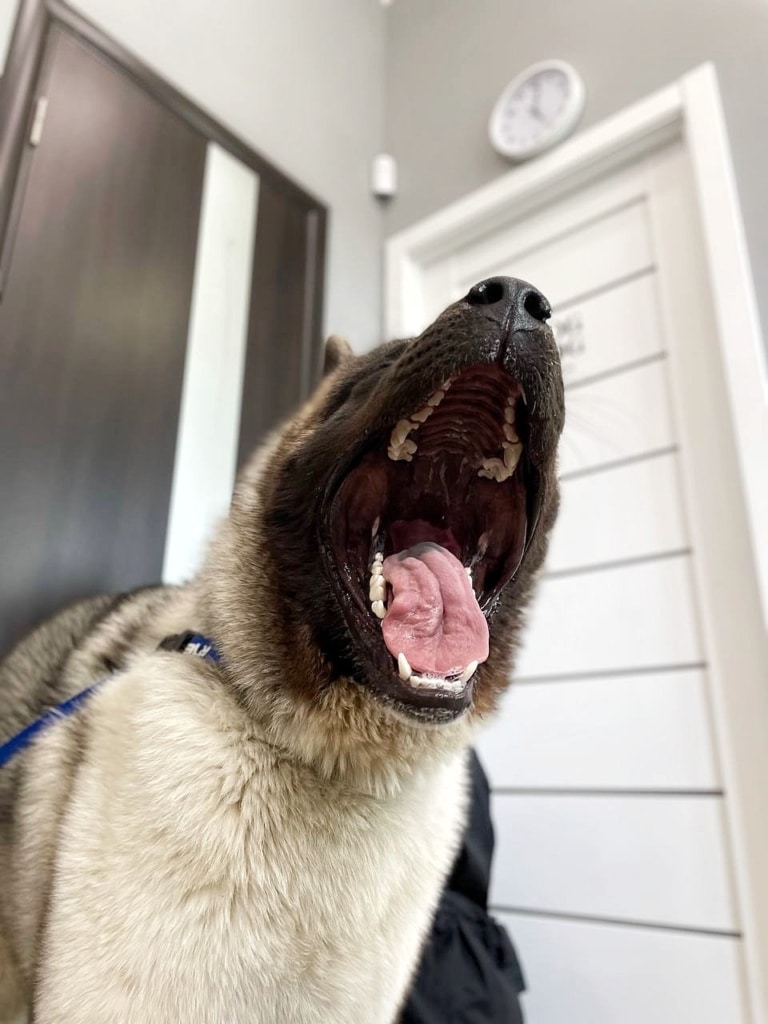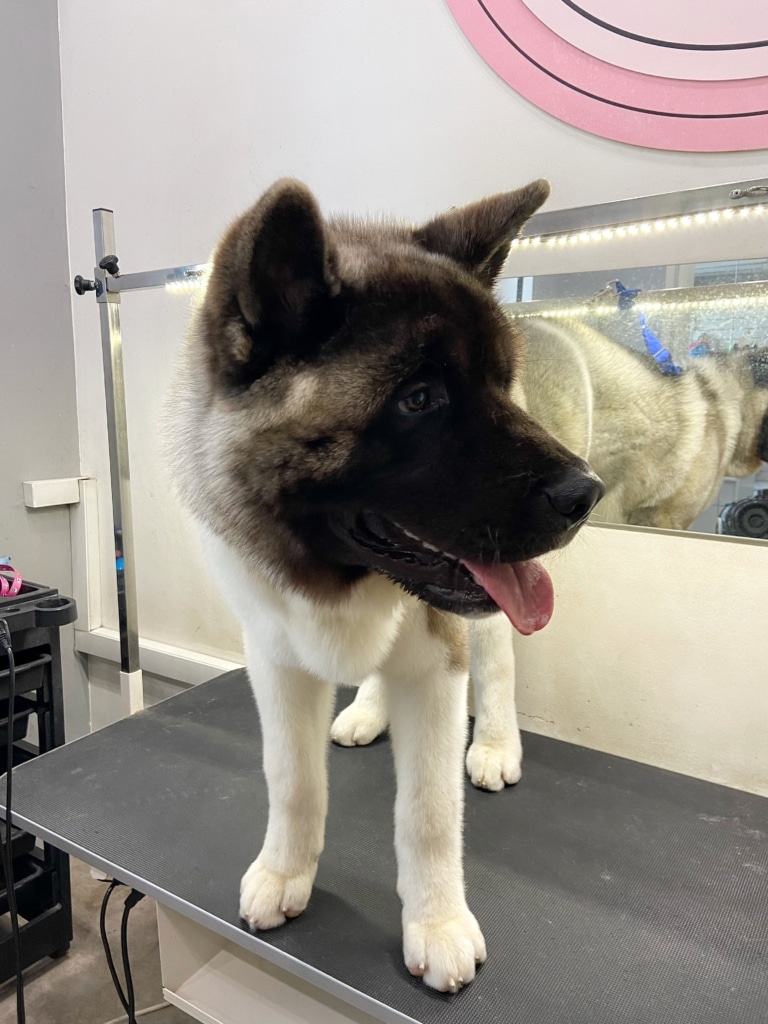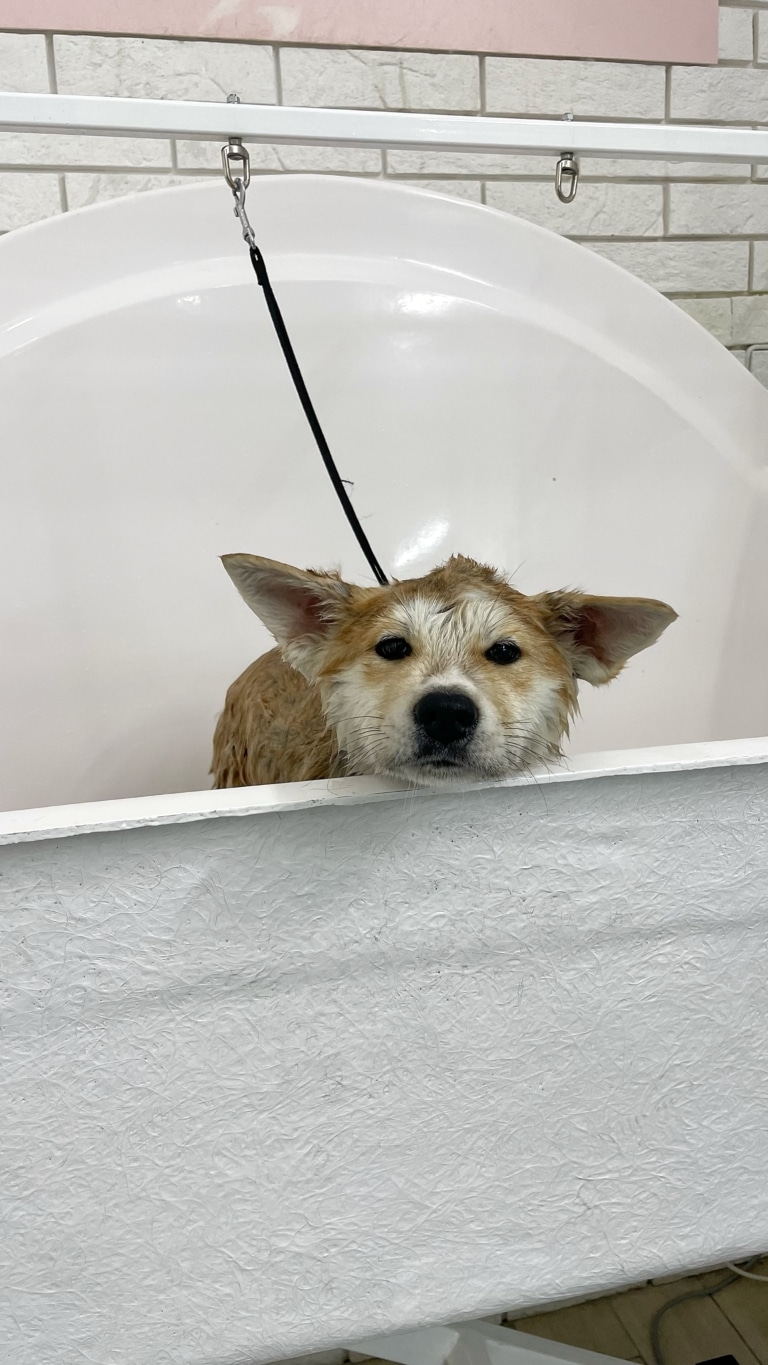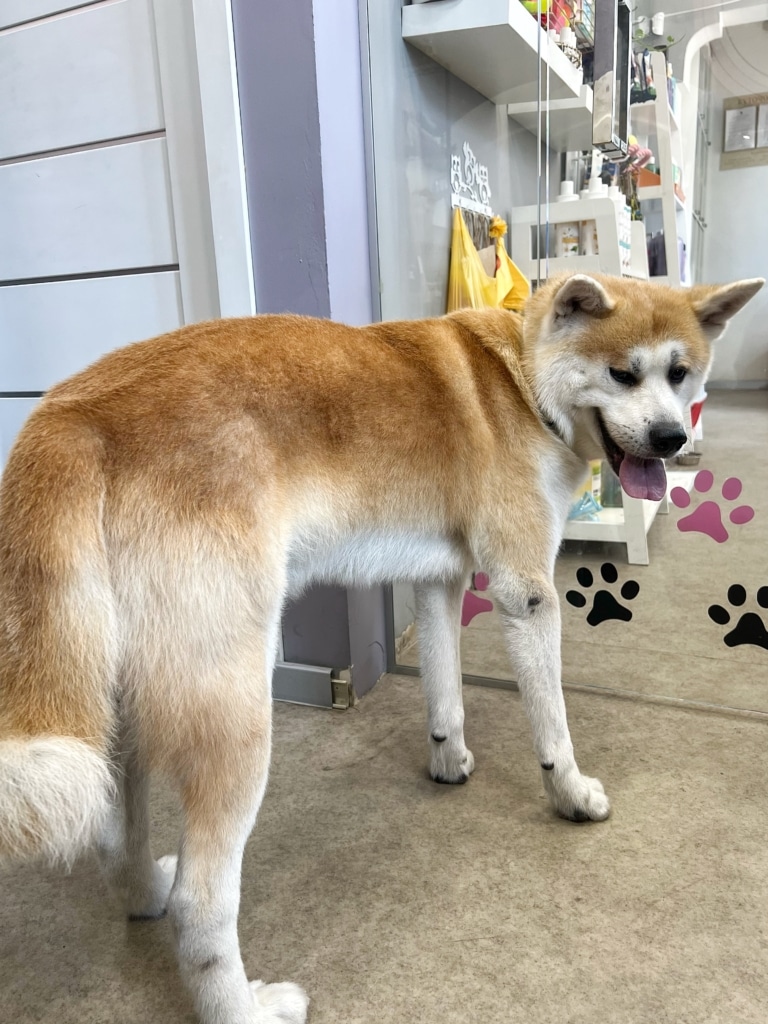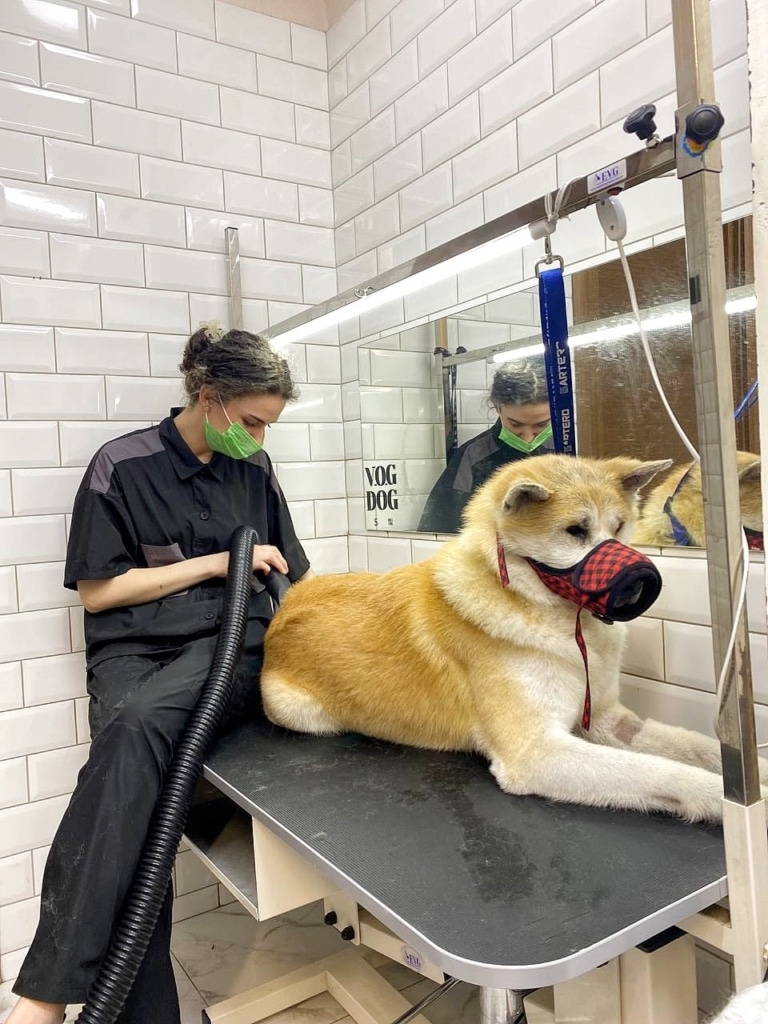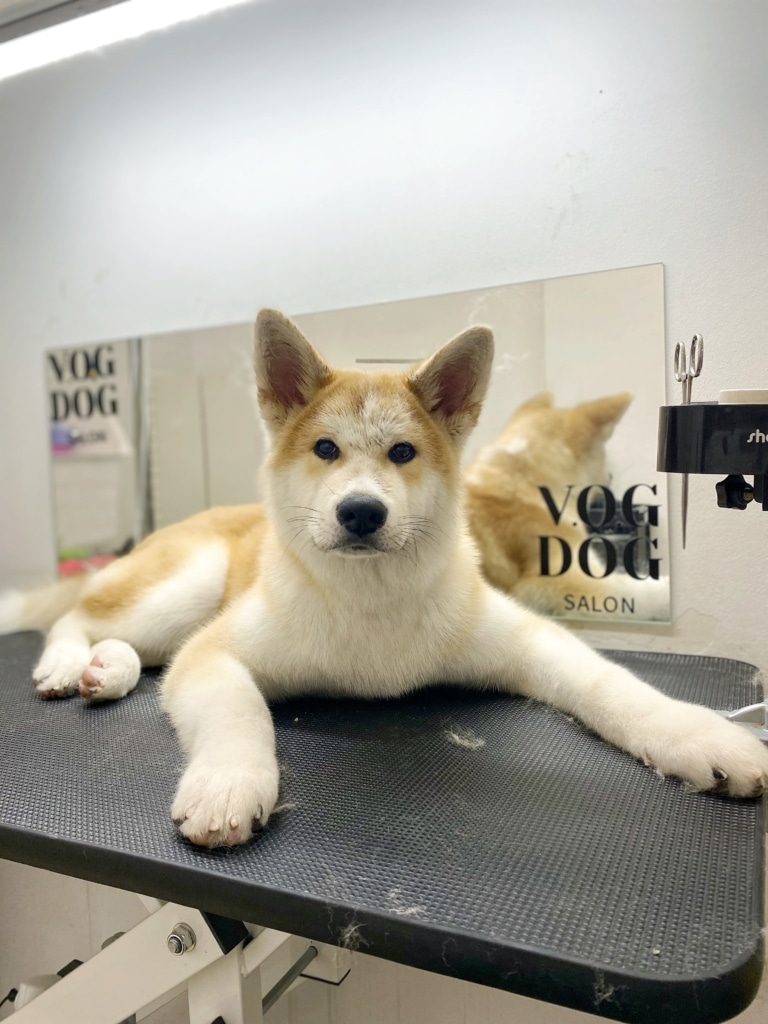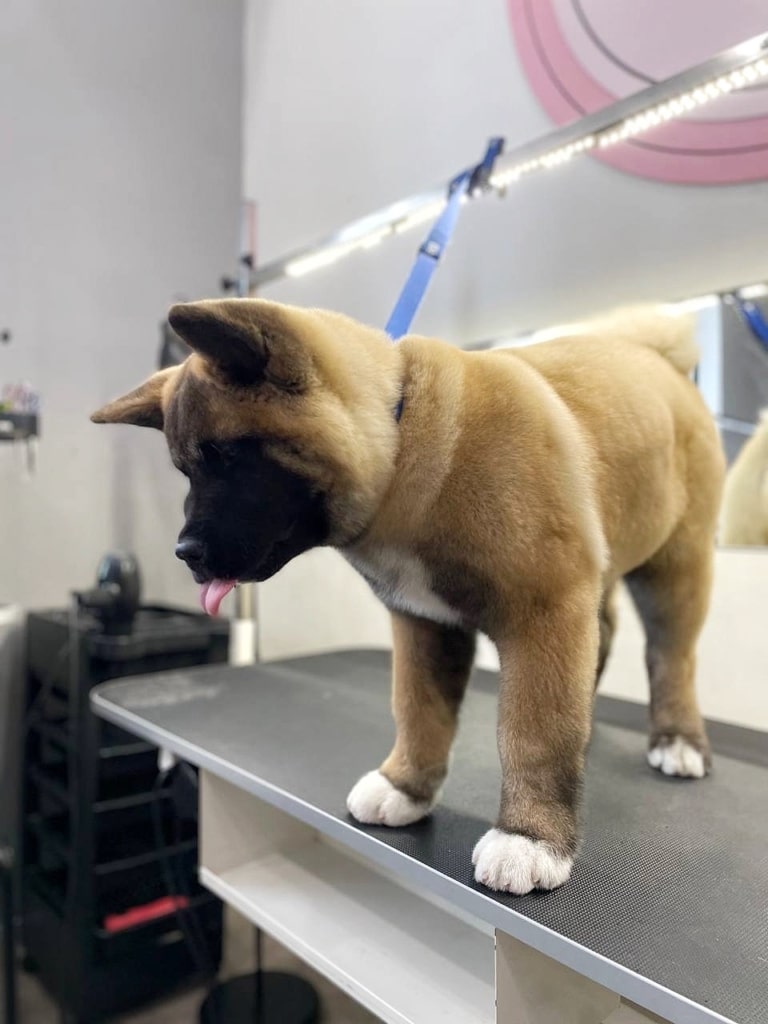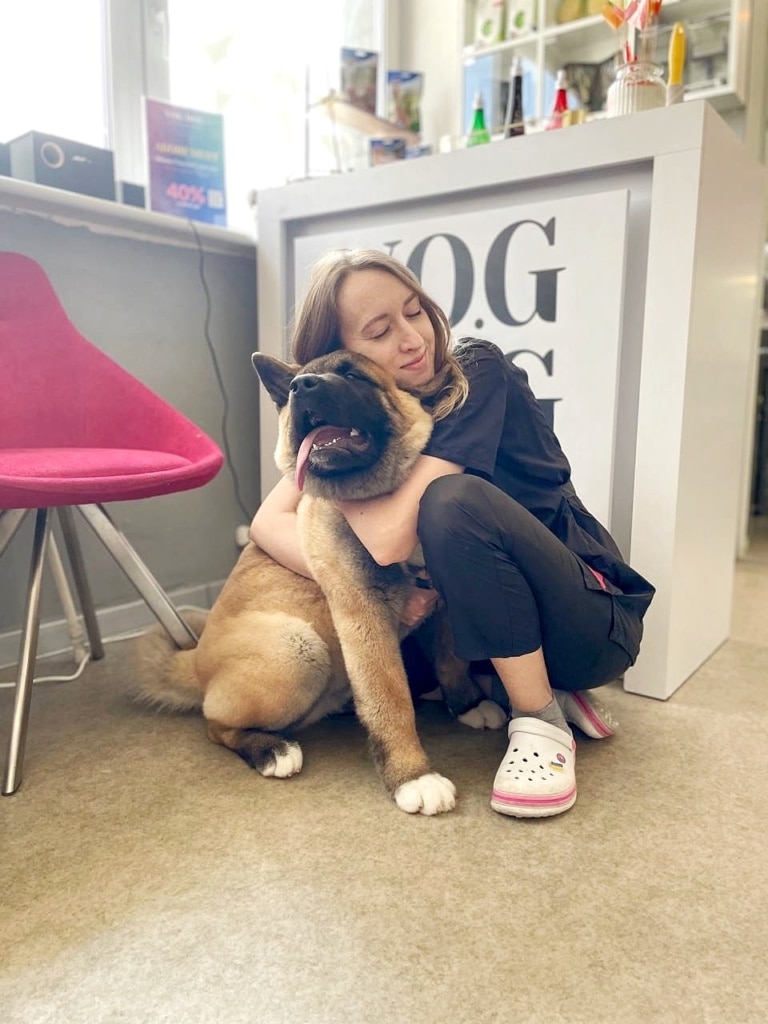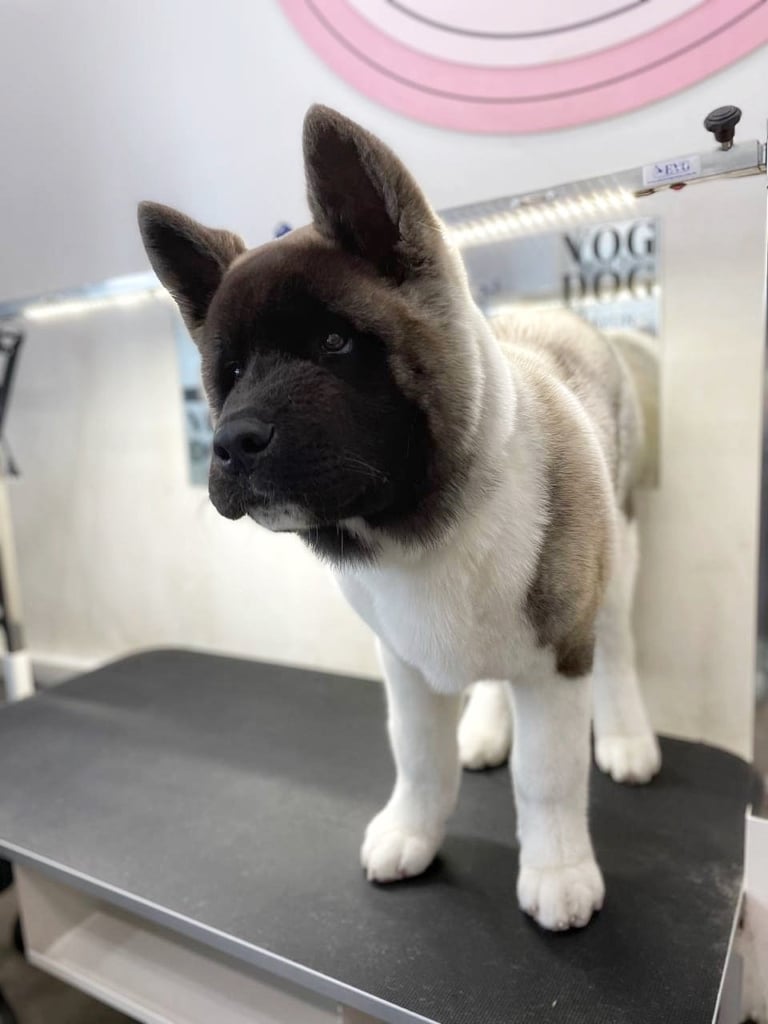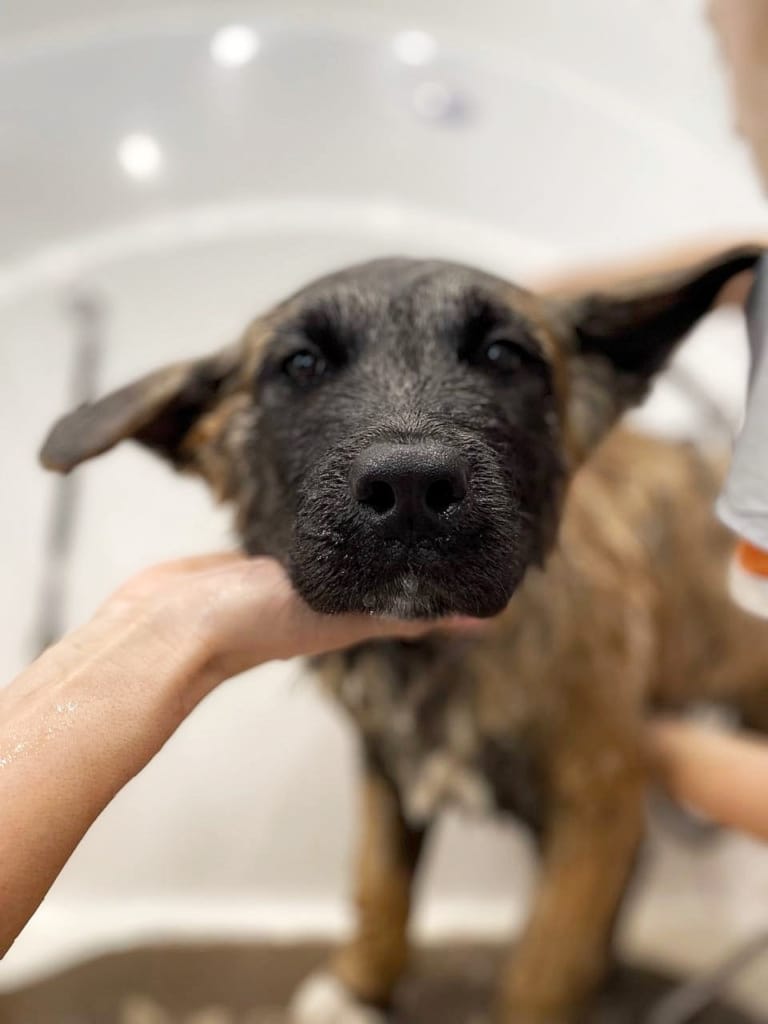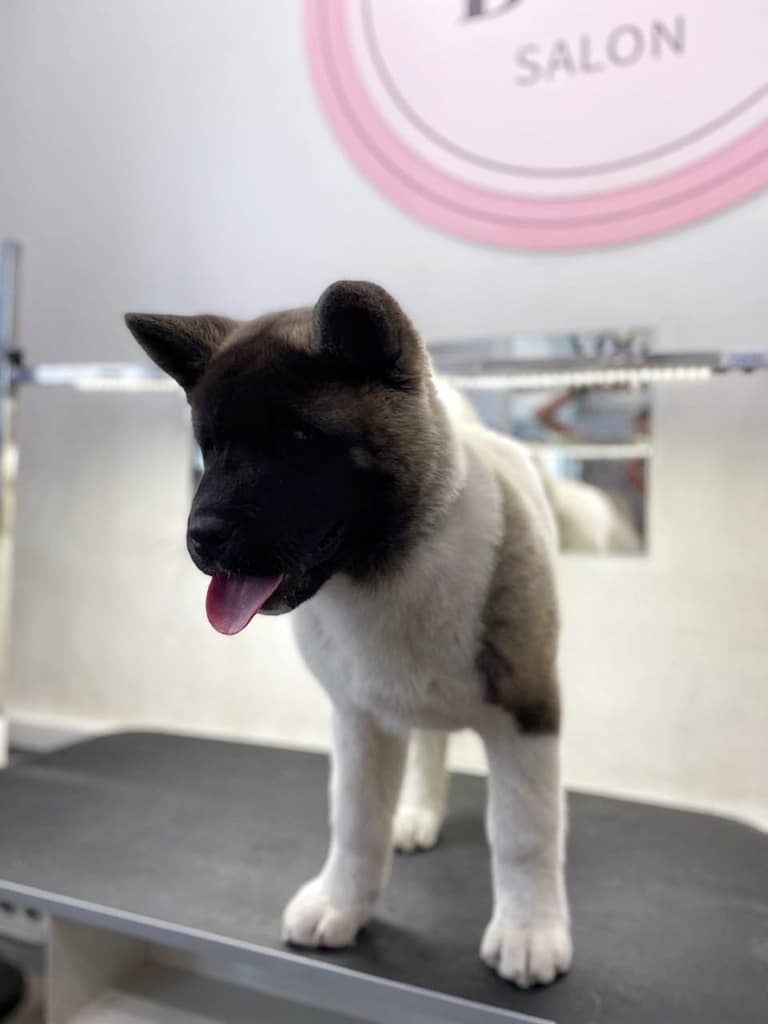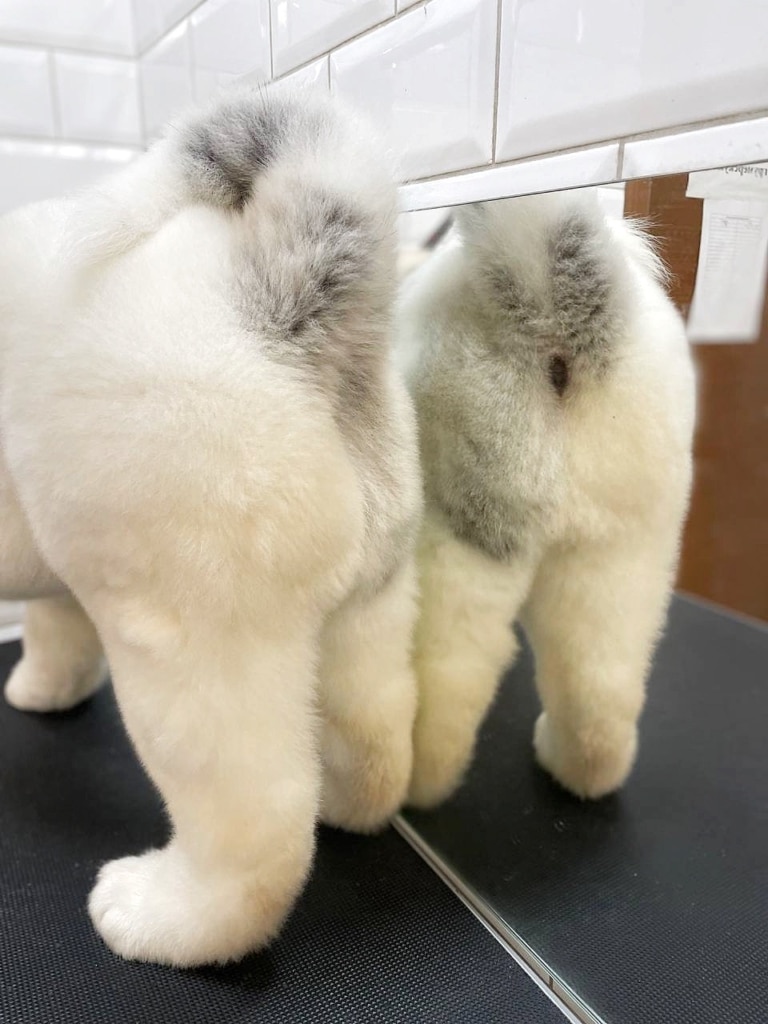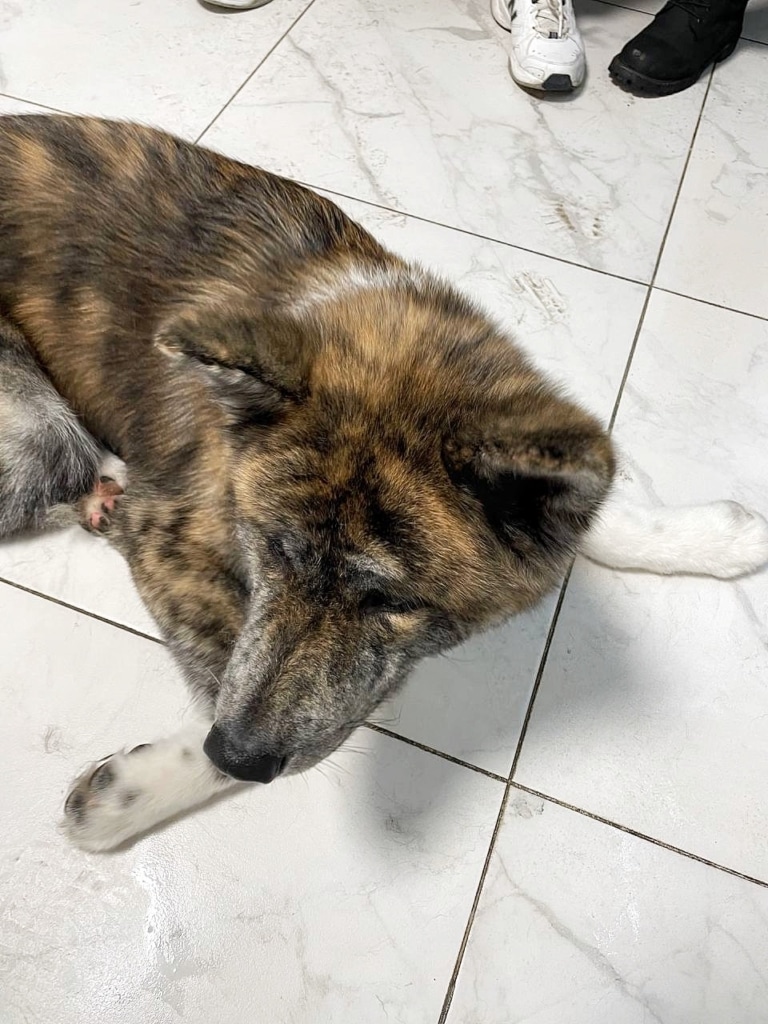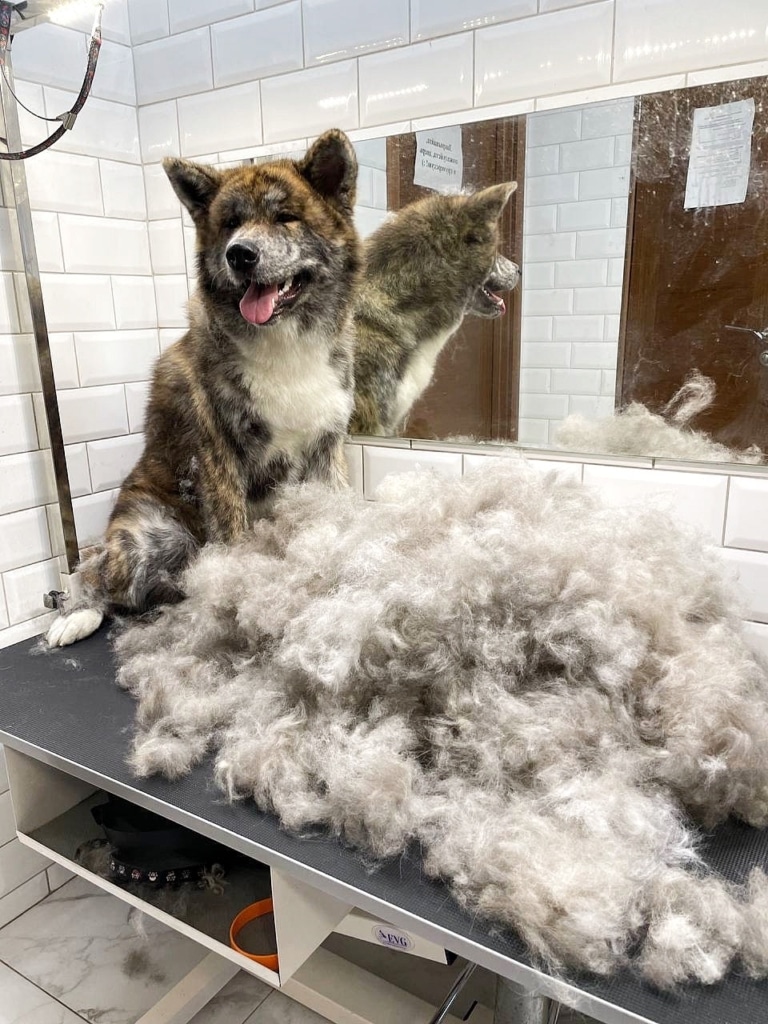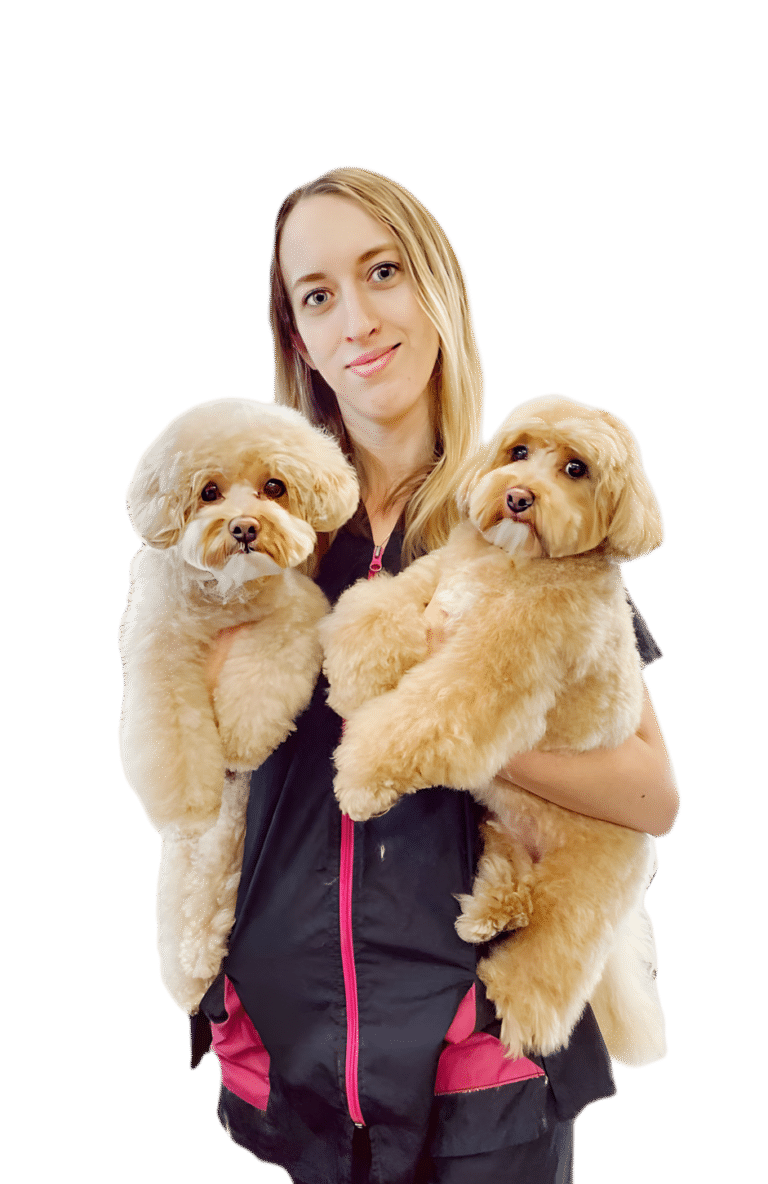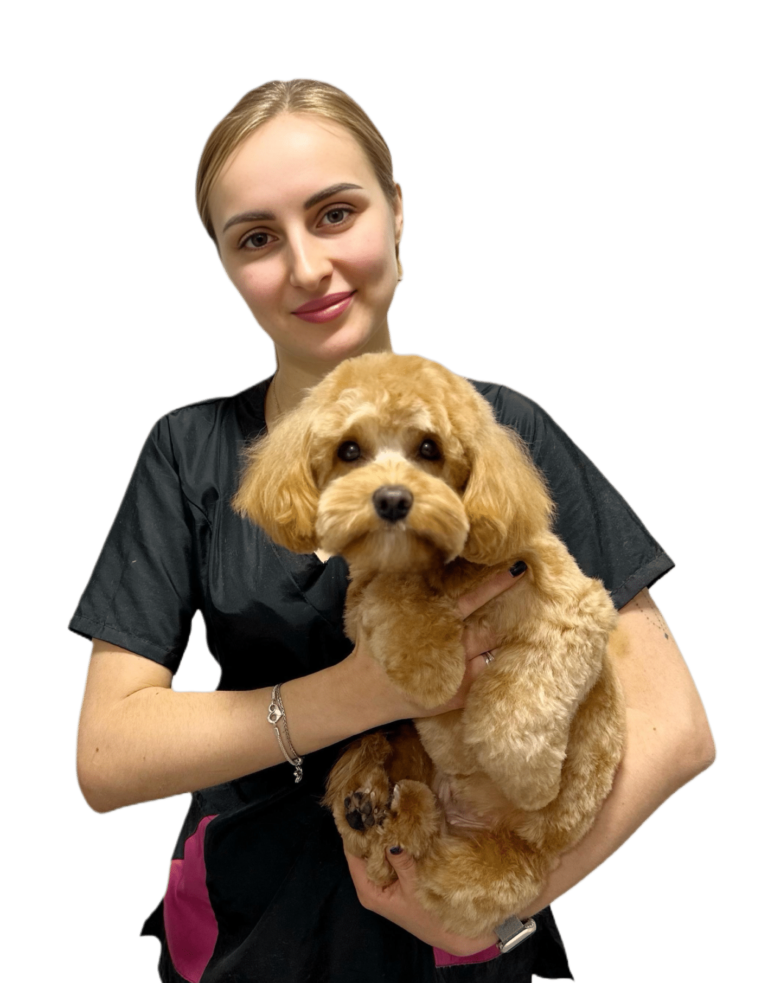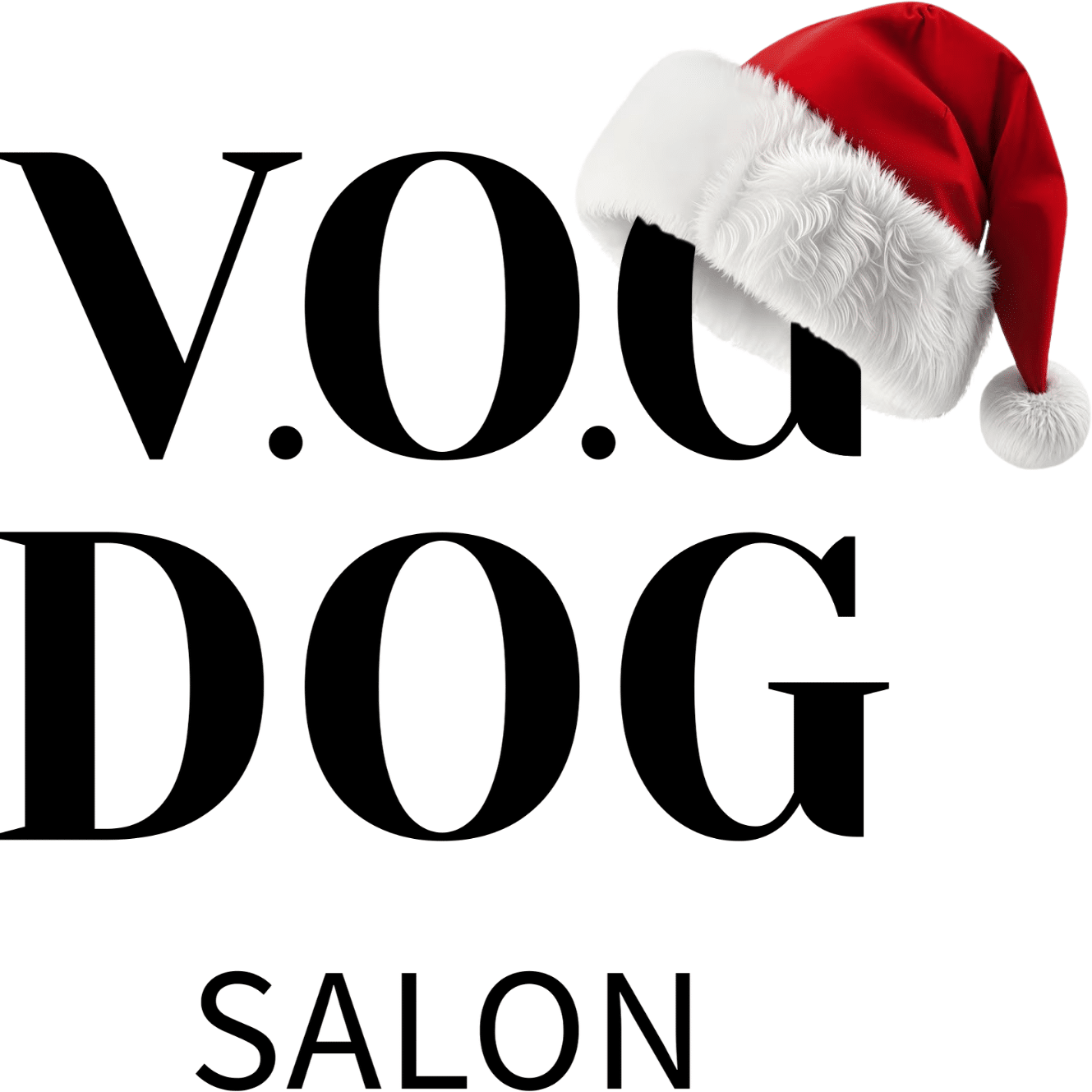
Description of the breed:
Akita-inu is a majestic and strong breed of dog that originates from Japan, where it was considered a symbol of loyalty, courage and nobility from time immemorial. These dogs have a massive build, with powerful muscles and broad shoulders. The height of the Akita-inu at the withers is usually between 61 and 71 cm, and the weight varies between 32 and 45 kg, depending on the dog’s sex.
One of the main features of the Akita-inu is its thick double-layered fur, which protects the animal from cold and moisture. The Akita has a broad chest, strong paws and a huge head, which gives it a confident and majestic appearance. Their tail is usually curled up, which gives them a special charm.
The breed originates from the mountainous regions of the island of Honshu in Japan and was originally used to hunt large game, including bears. Akita-inu was not only a hunter, but also a guard, and even a companion for the nobility. Thanks to their loyalty and devotion, they have become a national symbol of Japan.
There are two main types of Akita Inu:
- Japanese Akita Inu (Akita Inu)
This is an original breed that originates from Japan. The Japanese Akita has a more refined appearance with a triangular head, standing ears and a thin tail that curls over the back. The coat of the Japanese Akita is usually red, white or brindle. This breed remains close to its roots and preserves the traditional features characteristic of the Japanese Akita-inu. - American Akita (Akita American)
After the Second World War, the American military brought several Akitas from Japan to the United States, and as a result of breeding in America, its own type appeared. The American Akita is larger than the Japanese Akita, has a more massive head and a broad body. This species can have a variety of colors, including black, brown and even spotted.
Both types of Akita have common character traits such as loyalty, independence and protective instincts, but differ in their appearance and some physical characteristics.
Needs of the breed:
Akita-inu is a breed that requires special care, in particular for its thick double-layered coat. Regular brushing is a must as it helps to avoid mats and reduce shedding. Care is especially important during the seasonal coat change, when the Akita Inu sheds the most.
Grooming in the professional salon V.O.G DOG SALON includes high-quality combing of the undercoat, which supports the health of the coat and skin. In addition, specialists know how to properly care for the coat, which helps to preserve the natural shine and beauty of the dog. Akita Inus are not recommended to be clipped as this can adversely affect their undercoat and weather protection, but professional brushing and regular grooming are key to maintaining their coat in good condition.
In addition to regular grooming and combing of the thick coat, it is important to take care of the dog’s physical activity, because they need daily walks and exercises to maintain their health. Socialization and training are essential to prevent aggression and foster obedient behavior. It is important to ensure a balanced diet to avoid weight problems that can adversely affect the joints. Care of paws, eyes, ears and teeth are also part of the basic hygiene needs of this breed.
Prices for sets of procedures from V.O.G DOG SALON for Akita-inu
6 why you should enroll an Akita-Inu in our beauty salons for dogs V.O.G DOG SALON:
Akita-inu has a very thick and dense undercoat that requires specialized care. Groomers at V.O.G DOG SALON have the experience and knowledge to properly care for the double coat of this breed, using professional tools and techniques that help maintain the health of the coat and skin.
Akita-inu has a tendency to intensive shedding. Our network offers procedures to remove dead fur with the help of special tools, which minimizes shedding at home and maintains the cleanliness of the fur.
The Akita Inu is a large breed that requires a delicate approach when grooming. V.O.G DOG SALON has created special conditions for large dogs to ensure maximum comfort and safety during procedures, which is important for sensitive breeds such as Akita.
The Akita Inu is prone to skin problems such as allergies and dry skin. We use professional cosmetics suitable for the sensitive skin of this breed, which helps prevent irritation and maintains the natural balance of the skin.
Akita-inu leads an active lifestyle, so proper care of paws and claws is especially important. Our groomers pay special attention to the treatment of the paws, cleaning the pads of dirt and trimming the claws correctly to avoid injuries.
Akita-inu are known for their independent and often wary nature. V.O.G DOG SALON groomers have experience working with this breed and know how to find an approach to such dogs, providing a calm and positive environment during grooming, which makes the procedure less stressful for the animal.
Video of Akita Inu in V.O.G DOG SALON salons
Procedures necessary for the health and beauty of the Akita-inu
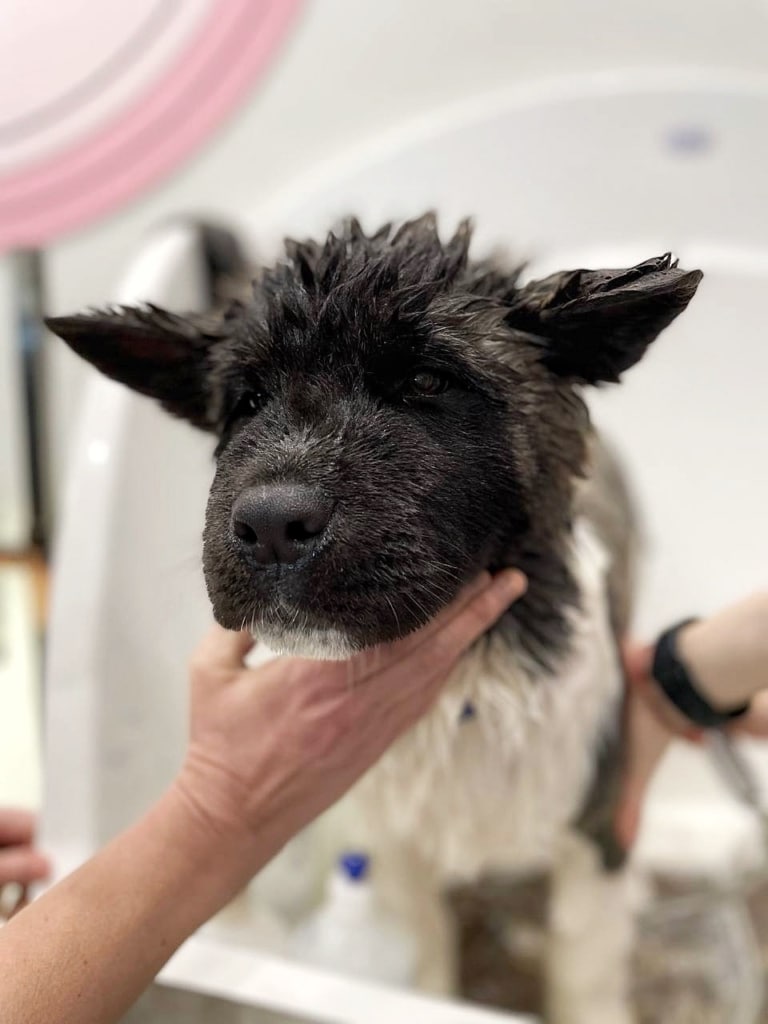
— Combing and hair care:
The Akita-inu has a thick double-layered coat that requires regular brushing. Weekly brushing will help keep the coat well-groomed, prevent the formation of mange and support the health of the undercoat. During periods of seasonal shedding (twice a year), it is worth increasing the frequency of combing to several times a week. For this, special brushes and combs are used, which penetrate deep into the undercoat without damaging the outer layer of the coat.
— Combing dead undercoat:
This breed is prone to intense shedding. Combing the dead undercoat is a mandatory procedure, especially in spring and autumn. For this, de-shedding tools are used, which effectively remove dead hair, leaving the coat healthy and clean.
— Water procedures:
Akitas don't need to be bathed often, but once every few months, a bath with a special shampoo for dogs with thick coats helps keep them clean. It is very important to use only special shampoos that preserve the natural fat on the skin and coat to avoid drying out the skin. After bathing, be sure to dry the coat completely to prevent moisture from building up in the undercoat, which can cause irritation.
— Care of paws and claws:
Regular care of the paws and claws is necessary to maintain the health of the Akita-inu. Claws should be trimmed every few weeks to prevent them from overgrowing, which can lead to problems with walking. Paw pads need to be periodically cleaned of dirt and checked for cracks or damage, especially after walks.
— Cleaning the ears:
The Akita Inu's ears also need regular inspection and cleaning. It is important to clean the ears with the help of special means to avoid infections. This is especially true for dogs that spend a lot of time outdoors, where there is a risk of dirt and moisture accumulating.
— Dental hygiene:
Oral health is one of the important aspects of care. It is recommended to brush your dog's teeth several times a week with a special dog brush and paste to prevent tartar and bad breath.
— Specialized grooming in the salon:
In addition to home care, regular visits to a professional groomer are recommended, who will be able to comprehensively care for the coat, ears, paws and claws of the Akita-inu. At V.O.G DOG SALON, we provide specialized services for this breed, including deep undercoat combing, coat cleaning and paw care to help preserve their natural appearance and health.
Frequently asked questions and answers about Akita Inu care:
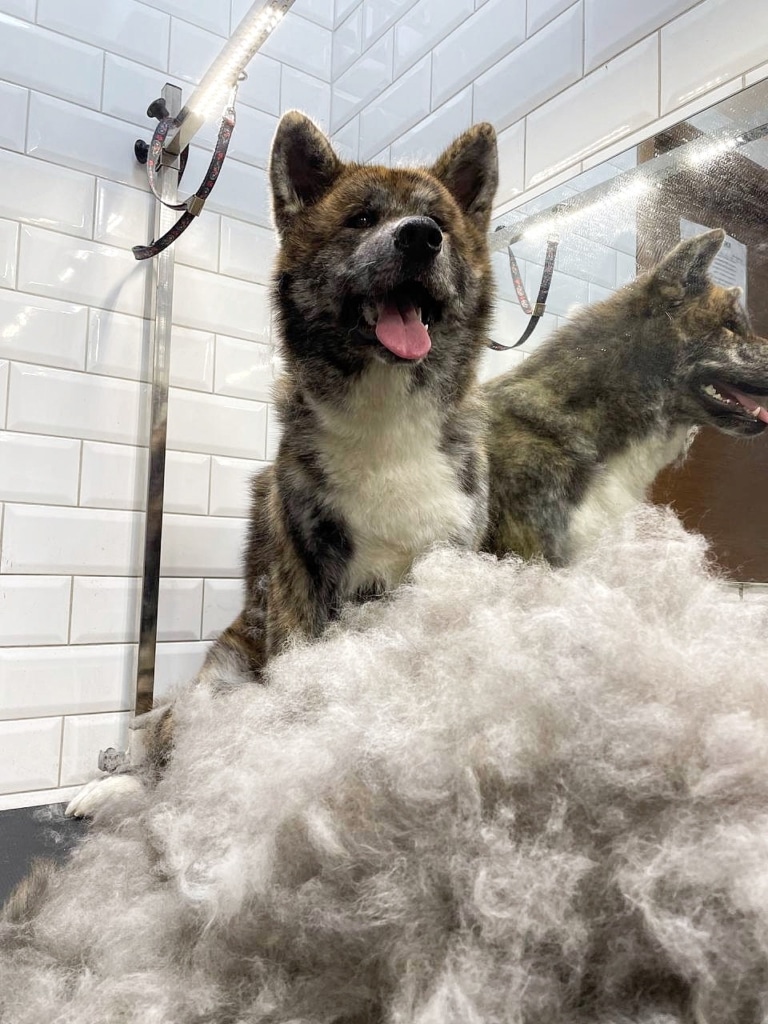
Can Akita-Inu dogs be cut?
Akita Inu is not recommended to be clipped, as their double coat has a natural protective layer that regulates body temperature and protects against weather conditions. Grooming can disrupt these natural functions, so it's best to focus on regular brushing and undercoat care. Only hygienic haircuts and on medical indications are possible.
How often do you need to visit an Akita Inu grooming salon?
It is recommended to visit the groomer at least once every 2-3 months for professional coat care, especially during seasonal shedding. This will help keep the coat in good condition and reduce shedding at home.
Where can you get an Akita Inu haircut in Kyiv?
In Kyiv, you can book an Akita-Inu for grooming at V.O.G DOG SALON, where specialists have experience working with this breed and offer comprehensive care. There are 11 grooming salons in our network in convenient locations: Pechersk, Solomyanka, Troyeshchyna, Lukyanivka, Poznyaki, Darnytsia, Holosiyvo, Vynogradar, Dorogozhichi, Kryukivshchyna.
What is the price for Akita Inu grooming?
The price of grooming for an Akita Inu depends on the services you choose, the complex and the condition of the coat. The price for comprehensive grooming at dog salons V.O.G DOG SALON starts from UAH 1,950.
How to care for Akita Inu fur at home?
At home, it is important to brush the Akita Inu's coat regularly, especially during shedding. Use special undercoat brushes to prevent matting and maintain a healthy coat. Water procedures should be carried out no more than once every 2-3 months.
Why does the Akita Inu shed a lot?
Akita-inu has a thick undercoat that sheds twice a year - in spring and autumn. Shedding is a natural process of hair renewal. Regular brushing helps reduce the amount of fur left on furniture and clothing. We also offer our clients the "Express-shedding" procedure.
How often should an Akita Inu's teeth be brushed?
Yes, regular oral hygiene is important for the Akita Inu. It is recommended to brush the teeth with a special brush and paste for dogs several times a week to prevent the formation of tartar and unpleasant odor.
What tools are needed to care for Akita Inu fur?
To care for the Akita Inu coat, you will need quality brushes for combing the undercoat, combs for detangling the coat and special products for cleaning the coat during bathing. It is best to use professional tools recommended by groomers.
Akita-inu photo in our salons
Our masters
Reviews
We are on Instagram!
Akita Inus are majestic, confident dogs that originated in Japan. Their noble appearance, calm character and strong build make them unique among other breeds. This breed was created to hunt large game, including bears, and later became a loyal companion and guardian for the family. Today Akita-inu is considered a symbol of loyalty and courage in Japan.
Breed standard
Akita-inu has a rather massive body structure, which is complemented by a thick double-layered coat that provides protection in various weather conditions.
- Coat: Thick, with a dense undercoat and a hard outer layer. This coat requires careful care, especially during shedding.
- Weight: Males can weigh from 40 to 45 kg, females from 32 to 40 kg. These are large and powerful dogs.
- Height: Males have a height at the withers of 66-71 cm, females – 61-66 cm.
- Tail: Curled over the back, which adds even more grace to the breed.
Akita-inu character
These dogs are known for their calmness and independence. Akita-inu usually does not show aggression without reason, but always remains wary of strangers. Their loyalty to their family is boundless, which makes them excellent guardians. But due to their independence, Akitas can be somewhat stubborn, so it is important to work on their education and socialization from an early age.
Health and physical activity
Akita-inu, despite its endurance, is prone to some genetic diseases. The most common health problems include hip dysplasia, progressive retinal atrophy and hypothyroidism. Regular medical examinations will help detect and prevent these diseases in time.
As for physical activity, the Akita Inu needs regular and long walks. These dogs are not hyperactive, but they need exercise to keep their muscles in good shape. Walks on a leash are suitable, as well as intellectual games that stimulate thinking. They love to spend time outdoors, but it is important to control their interactions with other dogs because of their natural protective instinct.
Hair care
The coat of the Akita Inu requires regular grooming, and this is perhaps one of the most important procedures for this breed. Correct combing plays a key role in Akita grooming:
- Combing: Akita has a double-layer coat, which sheds especially actively in spring and autumn. During molting, the coat must be combed daily to avoid mats and reduce the amount of wool in the house. To do this, use special tools for de-shedding and combs for thick undercoat.
- Bathing: Akitas should not be bathed often, as this can damage the natural protective layer of the skin. Bathing is done no more than once every 2-3 months using mild shampoos that maintain the natural balance of the skin and coat. After washing, be sure to dry the wool well to avoid the development of fungal infections due to the moisture of the undercoat.
- Cleaning paws and ears: Akita paws and ears need regular care. This is especially true of paw pads, which can often crack due to outdoor activity. Ears should be cleaned with special means to avoid infections.
- Nail trimming: Regular nail trimming will help prevent discomfort and problems with walking.
Contact with children
The Akita Inu can be a wonderful companion for children, especially if socialized from a young age. However, due to its independence and protective instinct, the Akita may not be very patient with small children. It is important to teach children the rules of handling a dog and not to leave them alone without supervision.
Akita-inu haircut
This breed is not recommended to be cut. Its double-layered wool has an important function of thermoregulation: in the summer, the wool protects from the heat, and in the winter – from the cold. Hair cutting can disrupt this natural defense and lead to skin problems. Instead of a haircut, it is better to focus on regular professional combing, which will keep the coat in good condition.
Differences in grooming American and Japanese Akita
The American Akita differs from the Japanese Akita in its more massive structure and denser wool. In terms of grooming, this means that the American Akita needs more intensive brushing, especially during shedding. Her coat may also be more prone to matting, so regular visits to the groomer are a must.
The Japanese Akita has a finer and shorter coat, which makes the grooming process a little easier, but it still needs regular brushing and proper hygiene. Basic procedures such as paw, ear and claw care are the same for both species.
Contacts
Kiev, Pechersk district, M. Mikhnovsky Boulevard (Friendship of Nations), 27
Kiev, Pechersk district, Lesya Ukrainka Boulevard, 14
Kiev, Solomyanka district, V. Lobanovsky Avenue, 6a
Kiev, Desniansky district, Red Kalina (Mayakovsky) Avenue, 68a
Kiev, Shevchenko district, Sholudenka Street, 14
Kiev, Darnytsky district, Knyazhy Zaton Street, 2/30
Kiev, Dnipro district, I. Kotlyarevsky (Work) Boulevard, 7
Kiev, Holosiivskyi district, 4 Seasons Residential Complex, Maksymovycha Street, 3d
Kyiv, Obolonskyi District, V. Ivasiuka Avenue, 6B (building 2)
Kiev, Shevchenkivskyi district, Shchusev Street, 4
Shop 10:00-21:00
Hotel 24/7
European Street, 2a (Eurocity Residential Complex, near Vyshneve town)
Kiev, Darnytskyi district, st. Knyazhiy Zaton, 11
